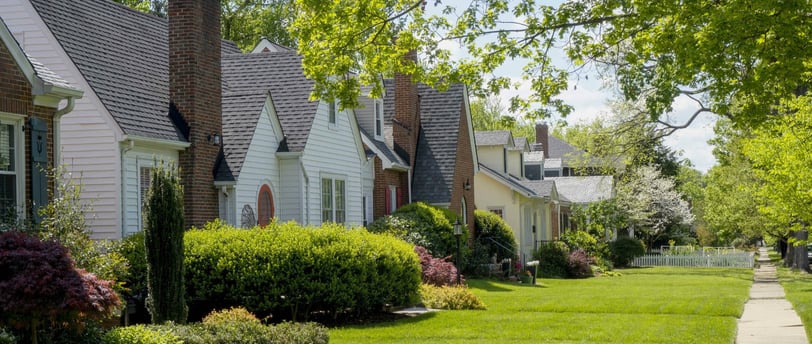Choosing the Right Neighborhood: Factors First-Time Buyers Should Consider
What first-time buyers should look for in a neighborhood, including proximity to amenities, future growth, and community feel.
HOME BUYERS
Maria Melendez Realtor/Broker
3 min read


Proximity to Amenities
When choosing a neighborhood, first-time homebuyers should give considerable attention to the proximity of essential amenities. Easy access to grocery stores, healthcare facilities, schools, and recreational areas can play a crucial role in enhancing the overall quality of life. Being close to public transportation hubs brings about added convenience, cutting down on commute times and providing enhanced accessibility to other parts of the city.
Daily needs like grocery shopping become significantly less time-consuming when markets and stores are within a short distance. Similarly, having healthcare facilities nearby ensures that medical assistance is readily available, which is especially important for families with children or elderly members. Quality schools within the vicinity not only promise a good education but also foster a sense of security and community among parents and children.
Recreational areas, such as parks and gyms, are just as critical. They provide spaces for physical activity, relaxation, and social gatherings, contributing to both physical well-being and mental health. A neighborhood with abundant green spaces allows residents to connect with nature, offering a serene escape from the routine hustle and bustle. Gyms and other fitness centers within close proximity make it easier for individuals to maintain an active lifestyle.
Leisure and entertainment options also add value. Restaurants, cafes, and cultural venues like theaters and museums bring vibrancy to the community. Dining out or enjoying a cultural event does not require extensive planning when such venues are locally accessible. A neighborhood teeming with these options is likely to foster a close-knit community ambiance, giving residents opportunities to socialize and engage with their surroundings. Overall, living in a neighborhood with a rich array of easily accessible amenities can substantially enhance everyday convenience and contribute to a more fulfilling lifestyle. This makes such a consideration indispensable for first-time homebuyers embarking on choosing their ideal neighborhood.
Future Growth and Development
When considering the purchase of a home, first-time buyers should not overlook the importance of a neighborhood's future growth and development. It is essential to research local government plans for infrastructure improvements, the emergence of new businesses, and upcoming residential projects. This information can provide valuable insight into the neighborhood's prospective prosperity and overall livability.
One of the primary factors to investigate is the rise in property values. Identifying neighborhoods where property values are on an upward trajectory can indicate promising growth potential. Investing in such areas can be a financially sound decision, as property appreciation can significantly enhance the value of the investment over time. Access to this data can usually be obtained through real estate market reports, public records, or consulting with local real estate agents.
Planned transportation upgrades and new infrastructure projects are also critical considerations. Enhanced connectivity through new roads, public transportation options, or improved access routes can lead to more convenient commutes and better accessibility to amenities. Keeping abreast of planned infrastructure upgrades can provide a clearer picture of future neighborhood dynamics and help anticipate the degree of day-to-day convenience.
Economic development initiatives, such as the introduction of new businesses and commercial centers, can dramatically impact neighborhood vitality. Areas attracting new enterprises and emphasizing local business growth typically offer more services, job opportunities, and increased economic stability. This uptick in local commerce can create a vibrant community environment, making the area more desirable for living.
Understanding the full scope of future development plans enables buyers to make informed decisions and anticipate changes that could influence their quality of life. By carefully assessing future growth potential through methodical research and professional guidance, first-time buyers can identify neighborhoods that not only meet their current needs but also promise a rewarding return on investment.
Community Feel and Safety
When considering a neighborhood, first-time homebuyers must prioritize the sense of community and the overall safety. These elements can significantly shape one's living experience and contribute to long-term satisfaction. Understanding the community feel involves visiting the neighborhood at different times of the day to observe its atmosphere and residents' interactions.
One of the key indicators of a strong community is local events and social gatherings. Look for activities such as farmers' markets, block parties, or festivals that foster community spirit. Equally important are neighborhood associations and active community groups; their presence often signifies a well-organized community with engaged residents. Such involvement promotes a sense of belonging and offers opportunities for new homeowners to integrate smoothly.
Safety, on the other hand, is paramount. Begin by reviewing local crime rates through online resources or visiting local police stations. Engage in conversations with current residents to gain firsthand insights into the neighborhood's safety. It might also be useful to assess the physical aspects of safety, such as well-lit streets and the visible presence of security measures such as neighborhood watch signs.
Additionally, a strong community vibe can enhance your sense of security. People who know their neighbors and watch out for each other contribute to a safer environment. Observing the maintenance of the neighborhood can also offer cues—well-kept properties often indicate a community that takes pride in its environment and collaborates to keep it safe.
For first-time buyers, prioritizing community feel and safety ensures not just a comfortable living environment but also peace of mind. A neighborhood that boasts a tight-knit community and robust safety measures becomes more than just a place to live; it becomes a nurturing space to grow and thrive.


